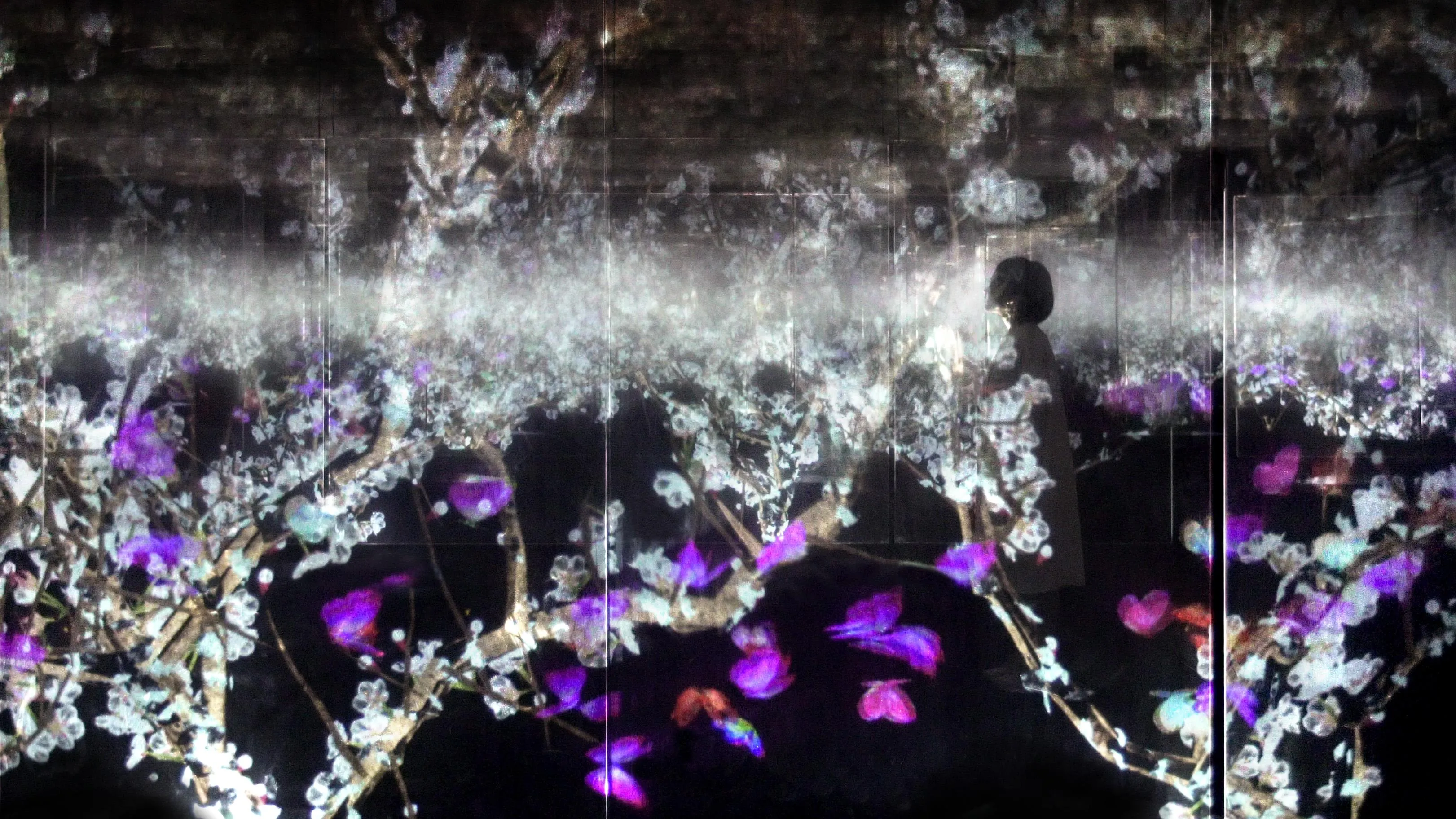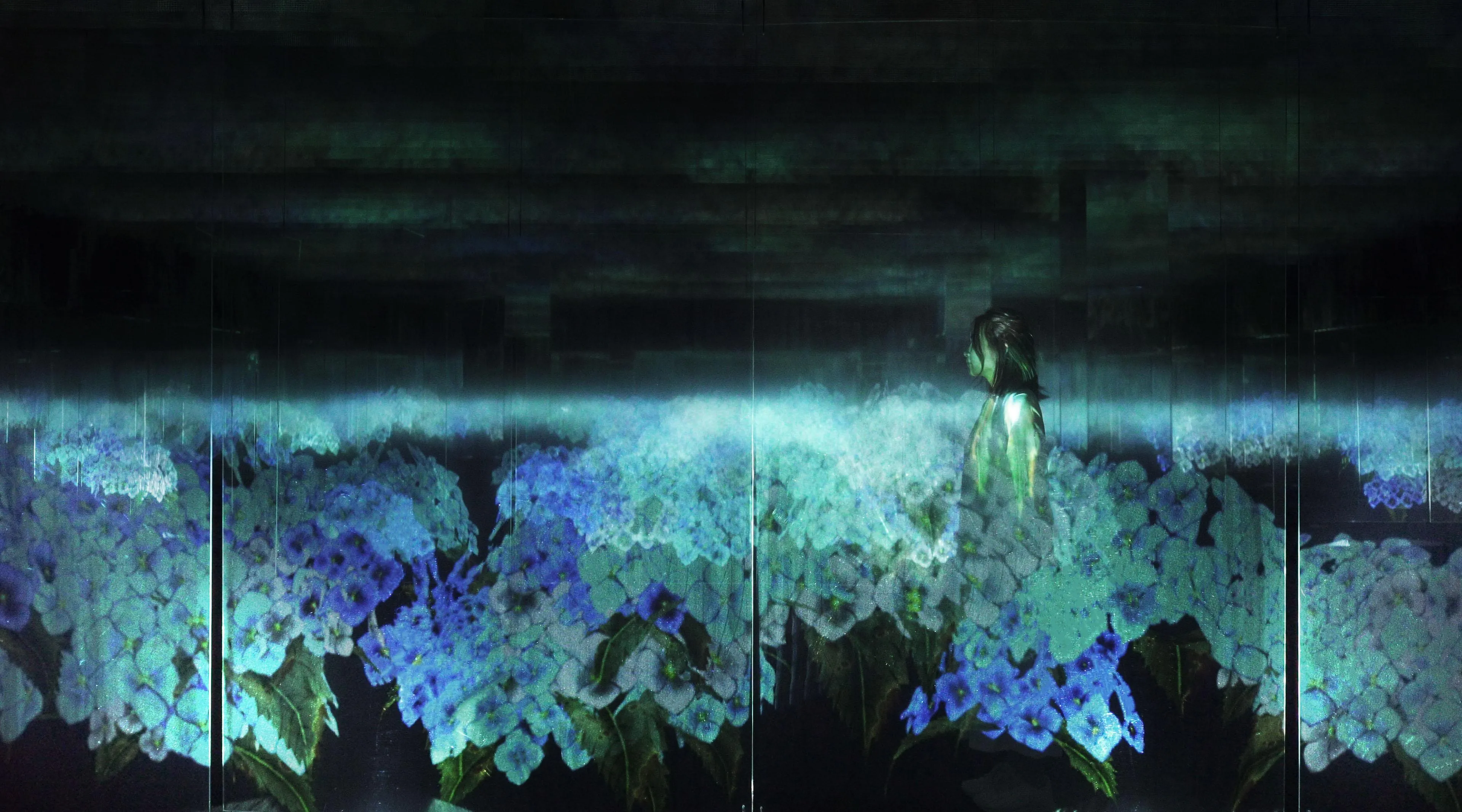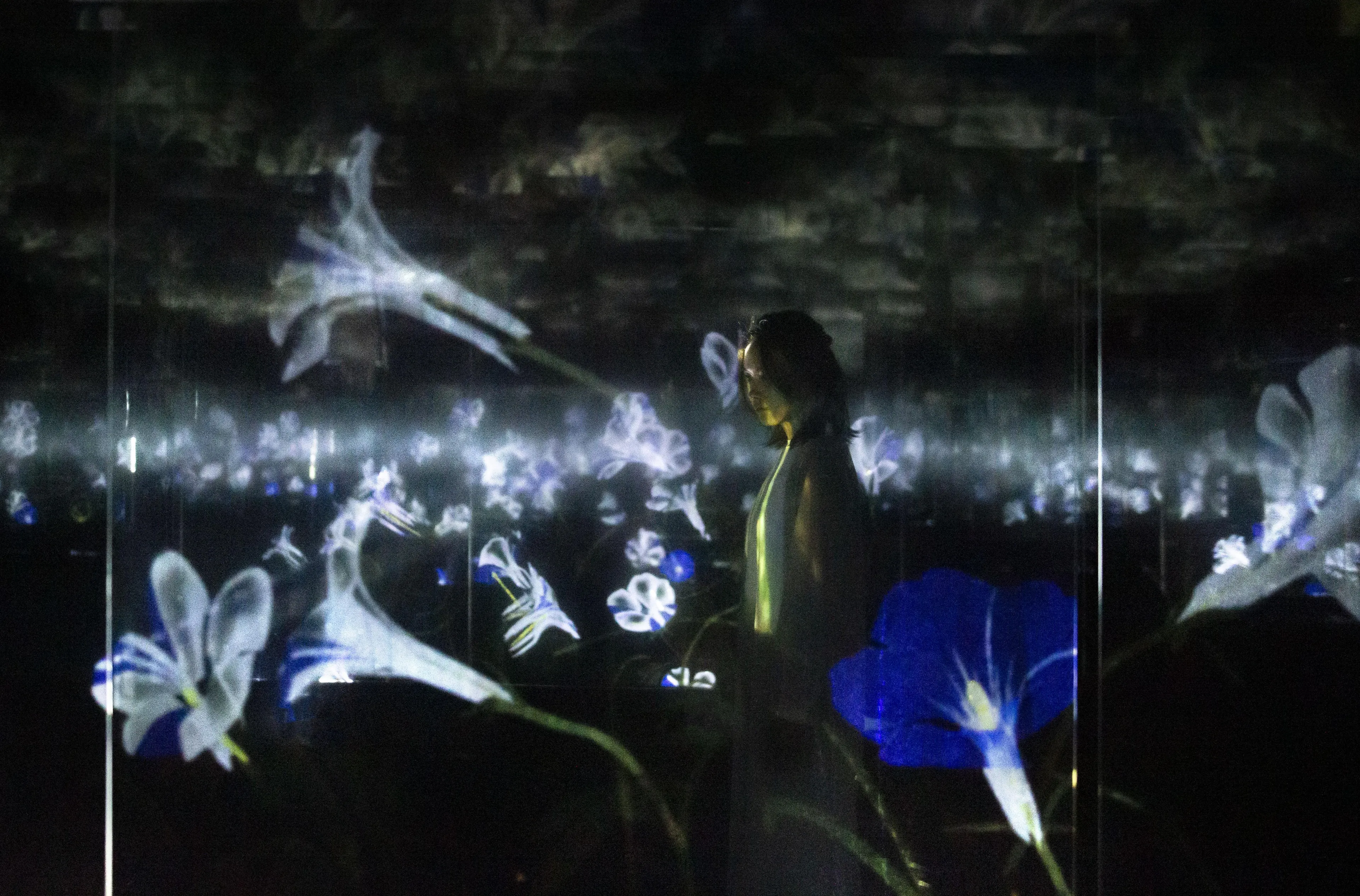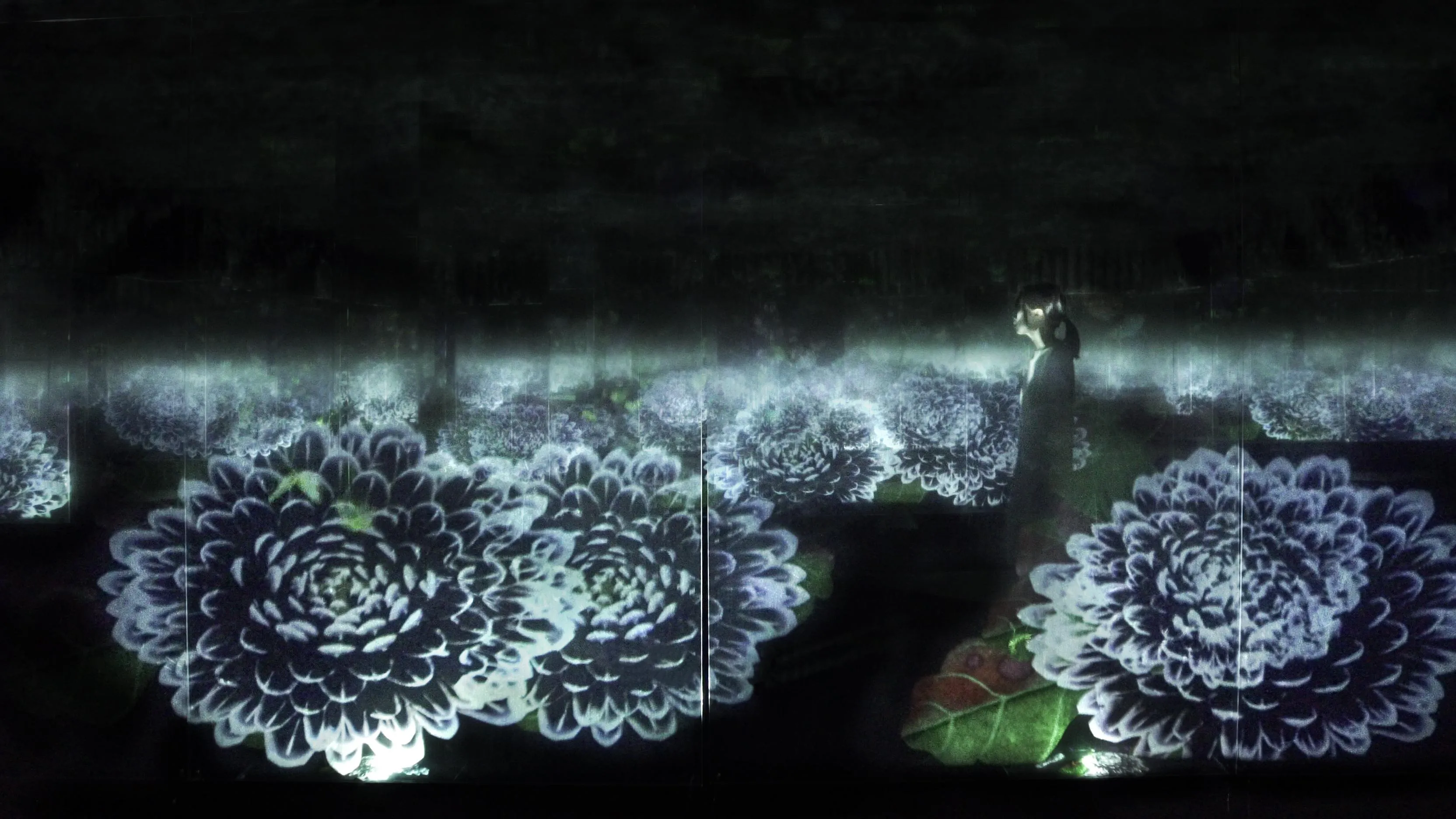Flowers in Layered Ultrasubjective Space
teamLab, 2018, Digital Installation, Endless, Sound: Hideaki Takahashi
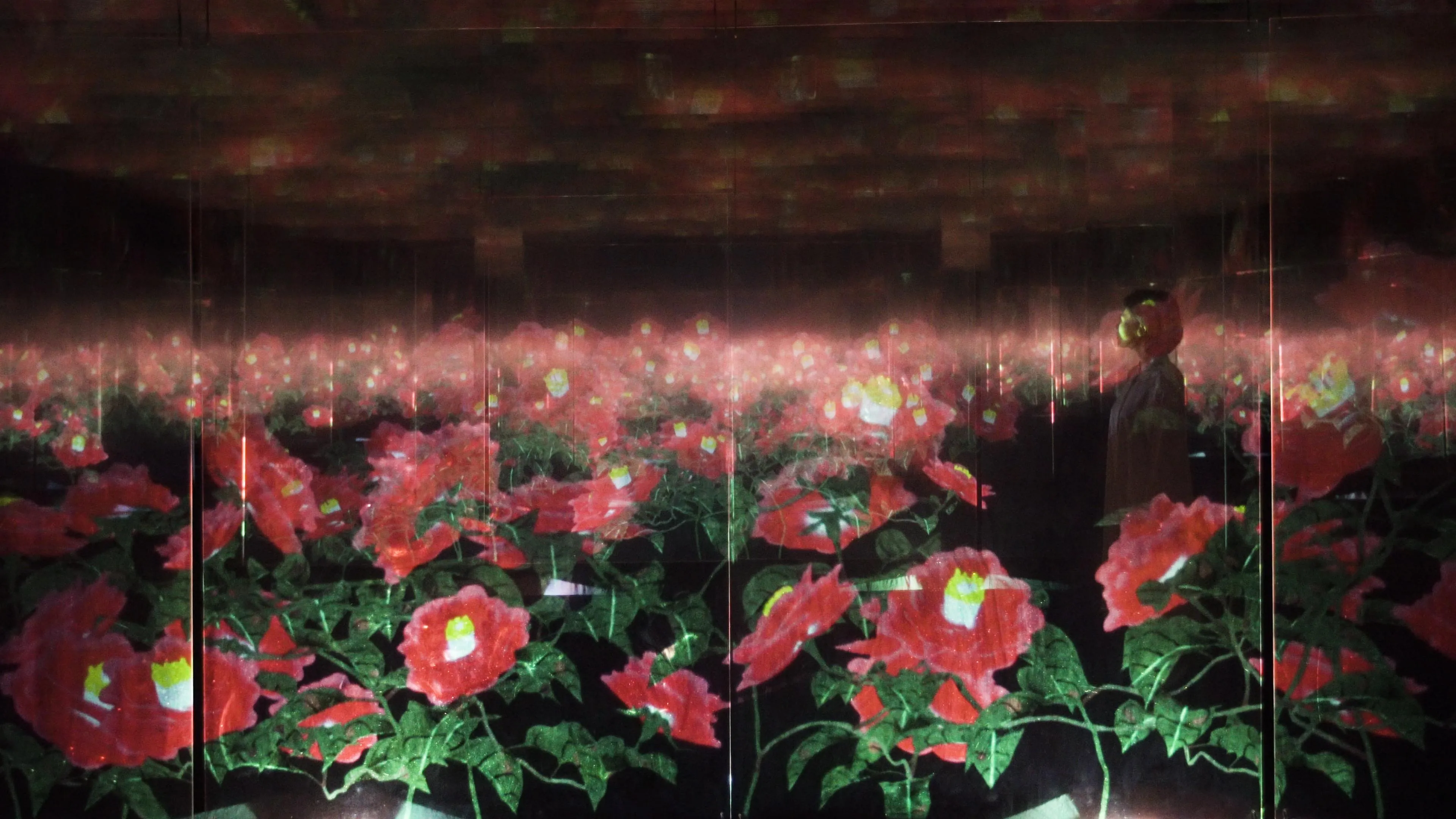
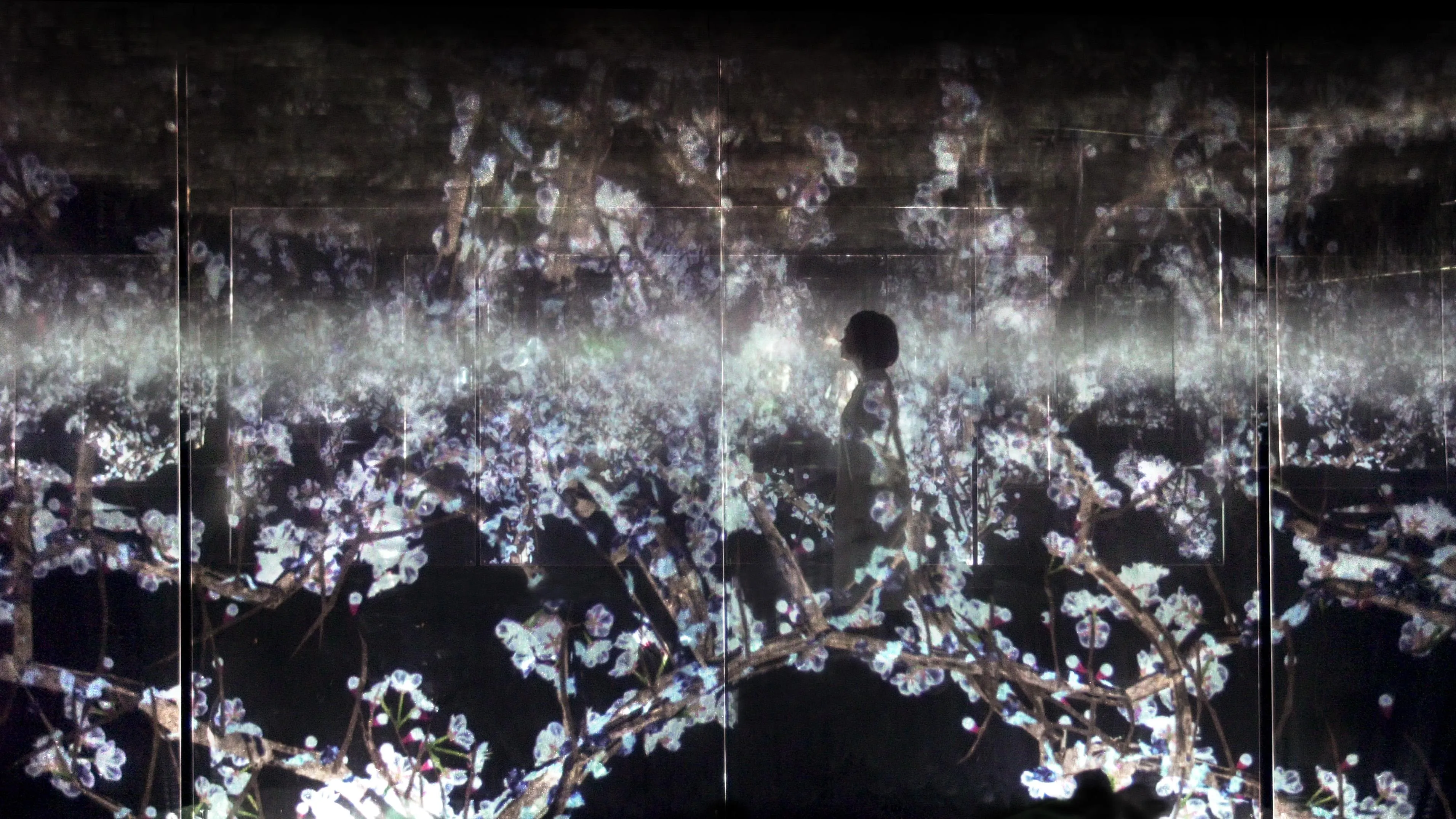
February, March
April, May
June, July
August, September
October, November
December, January
December, January
Flowers in Layered Ultrasubjective Space
teamLab, 2018, Digital Installation, Endless, Sound: Hideaki Takahashi
Flowers made of countless semi-transparent images.
Flowers bloom and change throughout the seasons. However when lotus flowers bloom in the passageway outside, they also flower within the space.
The flowers bud, grow, and blossom before they begin to wither and their petals eventually fall, repeating the cycle of life and death in perpetuity.
Multiple screens are positioned in the exhibition space. The position of the screens is reproduced on a computer in a virtual three-dimensional space, and then the artwork space is “flattened” from multiple viewpoints through Ultrasubjective Space. The flattened space is then placed onto the screens. Ultrasubjective Space allows the space around multiple viewpoints to be cut and rearranged together so that the space of the artwork world is superimposed on the exhibition space.
When a person is seen across the screens, layered with the flowers, the person appears as though they themself exist in the artwork world of the flowers. In other words, a person seen across the screens will become one not only with the exhibition space, but with the artwork world as well.
The artwork is not a pre-recorded image that is played back; it is created by a computer program that continuously renders the work in real time. The interaction between people and the installation causes continuous change in the artwork, so previous visual states can never be replicated, and will never reoccur. The picture at this moment can never be seen again.
Flowers bloom and change throughout the seasons. However when lotus flowers bloom in the passageway outside, they also flower within the space.
The flowers bud, grow, and blossom before they begin to wither and their petals eventually fall, repeating the cycle of life and death in perpetuity.
Multiple screens are positioned in the exhibition space. The position of the screens is reproduced on a computer in a virtual three-dimensional space, and then the artwork space is “flattened” from multiple viewpoints through Ultrasubjective Space. The flattened space is then placed onto the screens. Ultrasubjective Space allows the space around multiple viewpoints to be cut and rearranged together so that the space of the artwork world is superimposed on the exhibition space.
When a person is seen across the screens, layered with the flowers, the person appears as though they themself exist in the artwork world of the flowers. In other words, a person seen across the screens will become one not only with the exhibition space, but with the artwork world as well.
The artwork is not a pre-recorded image that is played back; it is created by a computer program that continuously renders the work in real time. The interaction between people and the installation causes continuous change in the artwork, so previous visual states can never be replicated, and will never reoccur. The picture at this moment can never be seen again.

